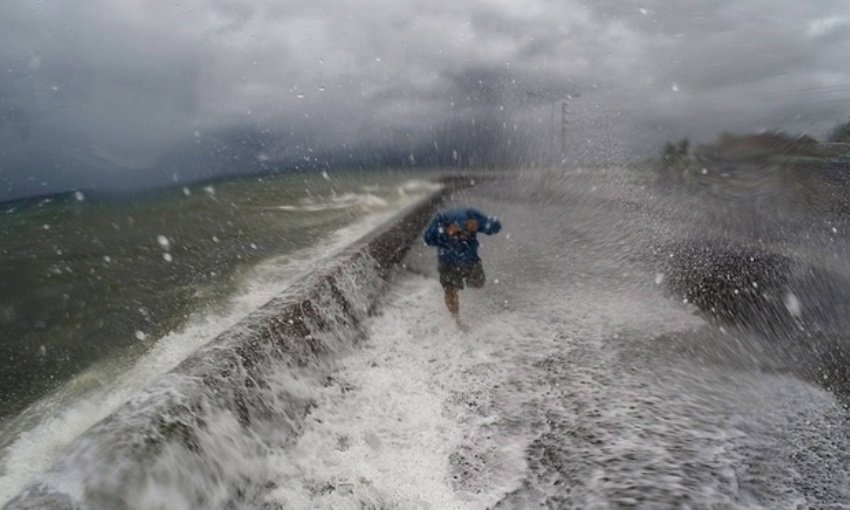
Millions left without power as typhoon's heavy rain and strong winds pound the Bicol peninsula and Romblon islands
Typhoon Melor carved through the central Philippines on Tuesday, bringing heavy rain and strong winds that left millions without power and at least three people dead, officials said.
One person died of hypothermia while two others drowned in floods in the fishing town of Catarman in Northern Samar province in the Visayas region south of Manila, municipal disaster officer Jonathan Baldo told DZMM radio.
The storm toppled trees and cut electricity to at least seven provinces, the National Disaster Risk Reduction and Management Council (NDRRMC) said.
Christmas lanterns and lights, tin roofs and branches littered the streets of the city of Legazpi, which was battered by strong winds.
People who fled from their coastal homes spent a sleepless night in evacuation centres, sprawled on classroom tables and chairs as flying debris swirled around outside.
Melor whipped the vast Bicol peninsula, with a population of 5.4 million people, overnight before slamming into the Romblon islands on Tuesday morning.
Gusts had weakened somewhat by Tuesday morning but were still recorded at 170km (106 miles) per hour, from 185km per hour on Monday. The storm was expected to weaken further as it heads to Mindoro island and out into the South China Sea later Tuesday, state weather forecaster Aldczar Aurelio said.
There were no immediate reports of casualties in the typhoon-prone Bicol region, where 720,000 people were evacuated as early as the weekend.
"We have zero floods, zero deaths, zero casualties," Albay governor Joey Salceda told ABS-CBN television.
"What we are asking for is the early restoration of electricity," he said, adding the entire province of 1.2 million people was without power.
Authorities were assessing Melor's damage while bracing for another typhoon brewing east of Mindanao, the country's main southern island, said NDRRMC spokeswoman Mina Marasigan.
Bad weather forced the cancellation of 16 domestic flights on Tuesday, adding to the 56 flights cancelled on Monday, the NDRRMC said.
The Philippines is hit by an average of 20 typhoons a year, many of them deadly, with the strongest happening towards the end of the year.
The last deadly storm to hit the country this year, Koppu, killed 54 people and forced tens of thousands to flee their homes after it pummelled rice-growing northern provinces in October.
In November 2013, one of the strongest typhoons on record, Haiyan, flattened entire communities in the central region with tsunami-like waves, leaving 7,350 people dead or missing.
Source: AFP



Reader Comments
to our Newsletter